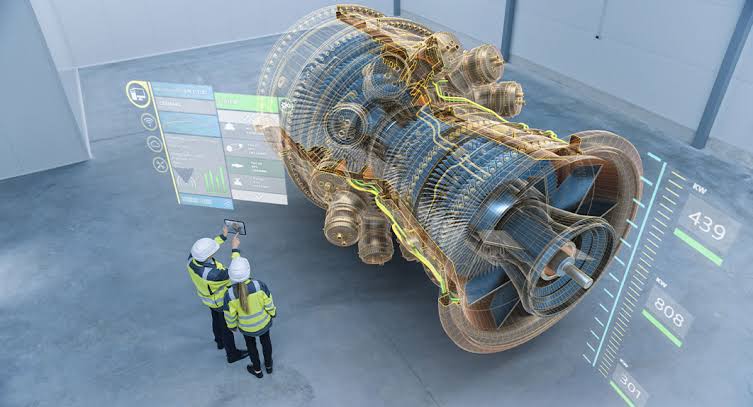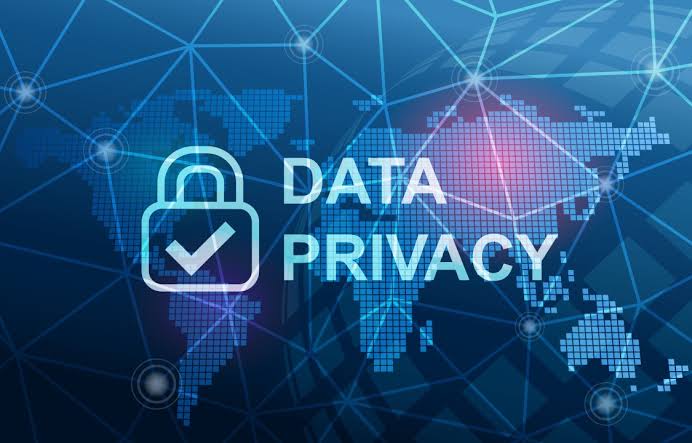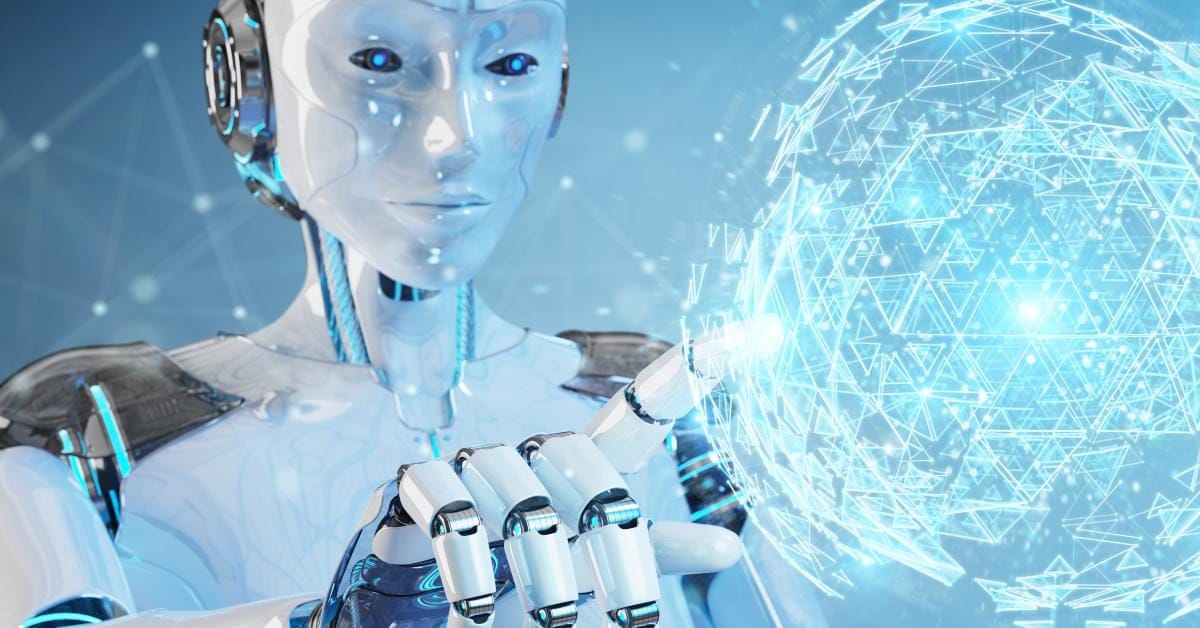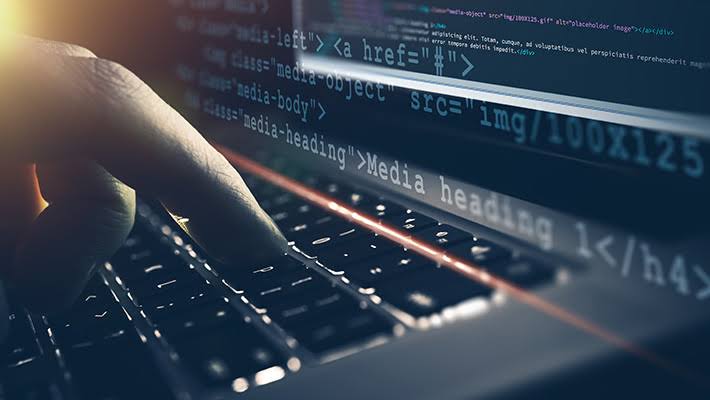
Digital Twins for Business Simulation and Planning
Digital Twins are virtual replicas of physical systems that enable businesses to simulate, analyze, and improve real-world processes. They combine real-time data, IoT, AI, and cloud computing to create dynamic models that support strategic planning and risk management. Used across industries like manufacturing, logistics, and healthcare, Digital Twins help test business decisions in a safe environment, predict outcomes, and enhance operational efficiency.
✨ Raghav Jain

Introduction
In an increasingly data-driven and digitally connected world, businesses are constantly seeking innovative ways to plan, simulate, and optimize operations. One such groundbreaking innovation is the concept of Digital Twins—virtual replicas of physical entities, systems, or processes. Originally used in engineering and manufacturing, digital twins are now transforming business strategy, decision-making, and planning across various industries.
Digital twins allow organizations to simulate real-world scenarios in a controlled virtual environment, enabling proactive decision-making, risk analysis, and performance optimization. From supply chain management to customer experience enhancement, the application of digital twins in business is vast and growing rapidly.
This article explores what digital twins are, how they work, and their powerful role in business simulation and planning, with practical examples and insights into future trends. The burgeoning complexity and dynamism of modern business environments have rendered traditional, static planning methodologies increasingly inadequate, paving the way for the emergence of "digital twins" as a transformative paradigm in business simulation and strategic planning. Far from being a mere buzzword, a digital twin in the business context is a sophisticated, real-time virtual replica or model of a physical asset, process, system, or even an entire organization. This virtual counterpart is meticulously engineered, utilizing vast streams of real-time data from sensors, operational systems, IoT devices, historical records, and external data sources, to mirror its physical counterpart with unprecedented accuracy and fidelity. The power of digital twins for business simulation and planning lies in their ability to transcend theoretical models, offering a dynamic, constantly updated digital representation that allows businesses to test scenarios, predict outcomes, optimize operations, and make data-driven strategic decisions in a risk-free, virtual environment before implementing them in the real world. This capability fundamentally reshapes how organizations approach foresight, problem-solving, and continuous improvement, moving from reactive adjustments to proactive, predictive management.
At its core, a digital twin for business is built upon a foundation of robust data integration and advanced analytical capabilities. Data streaming in from various sources – including manufacturing lines, supply chain logistics, customer relationship management (CRM) systems, enterprise resource planning (ERP) systems, sales data, and market intelligence – is continuously fed into the digital model. This real-time data flow ensures that the digital twin remains a precise reflection of its physical counterpart’s current state, performance, and environmental conditions. Beyond mere data aggregation, sophisticated analytical engines, often powered by artificial intelligence (AI), machine learning (ML), and predictive analytics algorithms, process this data to identify patterns, detect anomalies, forecast trends, and generate actionable insights. These algorithms enable the digital twin to not only describe the current state but also to predict future states and behaviors under various conditions. For instance, a digital twin of a factory floor might simulate the impact of a machine malfunction on production output, predict maintenance needs, or optimize workflow to minimize bottlenecks. This continuous feedback loop between the physical and digital realms allows for an iterative process of learning and refinement, ensuring the digital twin's predictive accuracy improves over time through self-correction and adaptation based on real-world outcomes.
The application of digital twins in business simulation offers profound advantages across various strategic and operational domains. In supply chain management, a digital twin can simulate the entire network, from raw material sourcing to final product delivery. This enables businesses to model the impact of geopolitical events, natural disasters, or sudden demand fluctuations on inventory levels, transportation routes, and delivery timelines. By running "what-if" scenarios, companies can identify vulnerabilities, optimize logistics, pre-empt disruptions, and design resilient supply chains, leading to reduced costs and improved customer satisfaction. For manufacturing and operations, digital twins of production lines, individual machines, or entire factories allow for predictive maintenance, where the virtual model anticipates equipment failures before they occur, enabling scheduled interventions that minimize downtime and maximize operational efficiency. They can also be used to simulate new production processes, optimize resource allocation, and even design factory layouts in a virtual environment, drastically reducing the time and cost associated with physical prototyping and experimentation. This leads to accelerated innovation cycles and enhanced product quality.
In the realm of customer experience and service delivery, digital twins can model customer journeys, simulating interactions across various touchpoints to identify pain points, optimize service flows, and predict customer behavior. For example, a digital twin of a retail store might simulate customer traffic patterns, product placement efficacy, or the impact of different staffing levels on wait times, allowing businesses to optimize the physical layout and operational procedures to enhance satisfaction. Furthermore, digital twins of products themselves can track real-time performance data from products in the field, providing insights into usage patterns, wear and tear, and potential flaws. This not only informs product design iterations but also enables proactive customer service, allowing companies to offer maintenance or upgrades before a customer experiences a problem, significantly boosting loyalty and brand perception. For strategic planning and financial forecasting, digital twins offer an unprecedented capability for scenario planning. Businesses can simulate the impact of market shifts, new competitor entries, regulatory changes, or different pricing strategies on revenue, profitability, and market share. This allows decision-makers to evaluate the potential outcomes of various strategic choices in a safe, virtual sandbox, identifying optimal pathways and mitigating risks before committing significant resources to real-world implementation. The ability to visualize complex interdependencies and ripple effects across an entire organizational ecosystem provides a clarity and foresight previously unattainable through traditional spreadsheet models or static reports.
Despite the immense promise, the implementation of digital twins for business simulation and planning is not without its challenges. The initial investment in sensor infrastructure, data integration platforms, and advanced analytical software can be substantial. Ensuring data quality, accuracy, and security is paramount, as flawed data can lead to erroneous simulations and detrimental real-world decisions. Integrating disparate legacy systems with new IoT and AI platforms often presents significant technical hurdles. Furthermore, the complexity of building and maintaining accurate digital twins requires specialized skills in data science, engineering, and domain expertise. Overcoming these challenges necessitates a phased implementation approach, starting with smaller, well-defined projects, coupled with a strong emphasis on cross-functional collaboration and continuous learning. As the technology matures and adoption becomes more widespread, the return on investment in terms of optimized operations, enhanced decision-making, and increased competitive advantage becomes increasingly compelling. Ultimately, digital twins are poised to transform business simulation and planning from a static, reactive process into a dynamic, predictive, and truly intelligent capability, empowering organizations to navigate uncertainty with greater confidence and precision in the increasingly complex global marketplace.
What is a Digital Twin?
A digital twin is a virtual representation of a physical object, system, or process that uses real-time data, machine learning, and simulations to mirror and predict its real-world counterpart’s performance. It is dynamic and continuously updated, reflecting changes in the physical world through sensors, data analytics, and AI integration.
Originally developed for industrial and aerospace applications (like NASA’s spacecraft simulations), the concept has expanded into sectors such as retail, healthcare, construction, logistics, and especially business planning.
Key Components of a Digital Twin
- Physical Entity: The real-world object, process, or system being mirrored (e.g., a supply chain, machine, or retail store).
- Digital Model: A computerized replica created using data modeling and simulation tools.
- Data Integration Layer: Sensors and data collection systems that feed real-time data from the physical to the digital twin.
- Analytics & Intelligence: Algorithms, AI, and machine learning that process data and generate actionable insights.
- Visualization Interface: Dashboards or tools that allow stakeholders to interact with and monitor the twin.
Digital Twins in Business Simulation
Digital twins enable businesses to create realistic simulations of operations, market conditions, and customer behaviors. This allows decision-makers to explore “what-if” scenarios, test strategies, and foresee outcomes without the risk or cost of real-world experimentation.
Examples of Business Simulations Using Digital Twins:
- Supply Chain Optimization: Simulate delays, disruptions, or demand spikes and plan responses.
- Retail Planning: Analyze customer footfall, layout changes, and sales impact.
- Financial Forecasting: Test revenue models, investment outcomes, or market volatility.
- Workforce Management: Simulate staffing needs, remote work productivity, or training effects.
By simulating different conditions, companies can improve their agility, reduce operational costs, and stay ahead of competitors.
Benefits of Digital Twins in Business Planning
1. Real-Time Decision-Making
Digital twins provide real-time insights based on live data from sensors, CRM tools, or enterprise software. Managers can track operations as they happen and make immediate decisions.
Example: A logistics company can monitor fleet performance, fuel efficiency, and route optimization live using a digital twin model of their operations.
2. Predictive Analytics and Forecasting
Using AI and machine learning, digital twins predict future scenarios based on past trends and current data. Businesses can proactively mitigate risks and seize opportunities.
Example: A manufacturer might use a digital twin to forecast equipment failure and schedule maintenance before a breakdown occurs.
3. Improved Resource Allocation
With simulations, businesses can test how to best allocate resources—whether financial, human, or material—based on likely outcomes.
Example: A retail chain can simulate customer demand across different locations to optimize inventory levels and reduce waste.
4. Enhanced Strategic Planning
Digital twins enable long-term scenario planning. Executives can analyze how global events, market shifts, or internal changes would impact the organization over months or years.
Example: A bank can simulate economic downturns and test the resilience of its investment portfolios or lending models.
5. Cost Savings
Avoiding costly real-world errors by testing in a simulated environment helps companies save money and reduce trial-and-error.
Example: A construction company can digitally test building layouts, resource needs, and climate impact before breaking ground.
Applications Across Industries
1. Manufacturing
- Monitor equipment health.
- Optimize production lines.
- Predict machine failures.
2. Retail
- Plan store layouts.
- Predict product demand.
- Enhance customer journeys.
3. Healthcare
- Simulate patient treatment plans.
- Optimize hospital workflows.
- Manage supply of medical equipment.
4. Finance
- Run simulations of economic scenarios.
- Optimize investment portfolios.
- Improve risk management.
5. Smart Cities
- Simulate traffic patterns.
- Optimize energy consumption.
- Improve emergency response planning.
Challenges and Considerations
Despite its vast potential, adopting digital twins in business requires addressing a few challenges:
1. Data Integration
Collecting and consolidating data from multiple sources can be complex, especially in legacy systems.
2. Cost and Complexity
Developing accurate digital twins requires investment in infrastructure, software, and expertise.
3. Cybersecurity
Digital twins rely on real-time data exchange, making them potential targets for cyber threats. Securing the digital twin environment is crucial.
4. Accuracy and Maintenance
A digital twin is only as good as the data it receives. Regular updates and validation are necessary to keep the twin relevant and accurate.
Future of Digital Twins in Business
The digital twin market is projected to grow exponentially. As AI, IoT, and cloud computing continue to evolve, digital twins will become more intelligent, accessible, and embedded in everyday business processes.
Emerging technologies like the Metaverse, blockchain, and quantum computing may soon enhance the realism and capability of digital twins even further, enabling entirely virtual replicas of organizations—so-called “enterprise metaverse twins.”
We may also see increased democratization of digital twin technology, where even small and medium-sized businesses can leverage this innovation thanks to cloud-based platforms and SaaS tools.
Conclusion
Digital twins are revolutionizing the way businesses simulate and plan their operations. By providing a real-time, data-driven, and dynamic mirror of real-world systems, digital twins empower organizations to test strategies, improve efficiency, and make informed decisions in a risk-free virtual environment.
From supply chain logistics to customer experience design and long-term scenario planning, the applications are vast and rapidly expanding. Though there are implementation challenges, the potential for cost savings, improved productivity, and competitive advantage makes digital twins a powerful tool for the future of business.
As technology continues to advance, digital twins will become a cornerstone of strategic planning—enabling businesses to not just react to change, but to anticipate and shape it.
Q&A Section
Q1: What is a Digital Twin in the context of business?
Ans: A Digital Twin is a virtual replica of a physical product, process, or system. In business, it helps simulate real-world scenarios for planning, monitoring, and improving performance.
Q2: How do Digital Twins support business simulation?
Ans: Digital Twins simulate various business operations and environments, allowing companies to test strategies, predict outcomes, and make data-driven decisions without risking real-world failure.
Q3: What industries benefit the most from Digital Twin technology?
Ans: Manufacturing, healthcare, logistics, automotive, and retail industries gain the most from Digital Twins through optimized operations, predictive maintenance, and enhanced customer experiences.
Q4: How do Digital Twins improve planning in supply chain management?
Ans: They help visualize the entire supply chain, detect bottlenecks, forecast demand, and test logistics strategies—leading to more agile and resilient supply chain planning.
Q5: What role does data play in creating a Digital Twin?
Ans: Real-time data from sensors, IoT devices, and enterprise systems fuels the Digital Twin, enabling accurate simulations and timely insights for business optimization.
Q6: Are Digital Twins and simulations the same?
Ans: No. Simulations are static models, while Digital Twins are dynamic and continuously updated with real-time data, providing a more accurate reflection of the actual system.
Q7: Can small businesses use Digital Twin technology?
Ans: Yes. Cloud-based and modular Digital Twin solutions are increasingly accessible and scalable, allowing small businesses to use them for strategic planning and efficiency.
Q8: How do Digital Twins help reduce operational risks?
Ans: By simulating scenarios such as demand surges or supply disruptions, Digital Twins help identify vulnerabilities and prepare mitigation strategies without real-world consequences.
Q9: What are the technological components of a Digital Twin?
Ans: Key components include IoT sensors, real-time analytics, AI/machine learning models, cloud platforms, and simulation software to replicate and analyze business systems.
Q10: What is the future potential of Digital Twins in business?
Ans: Digital Twins will evolve with AI and edge computing to enable hyper-personalized, self-optimizing business systems that adapt instantly to internal and external changes.
Similar Articles
Find more relatable content in similar Articles

Data privacy regulations (GDPR..
Data privacy regulations such.. Read More

Rising Cyber Crimes: Latest T..
Cyber crimes are rapidly grow.. Read More

The Role of Robotics in Streng..
Robotics plays a vital role i.. Read More

The Future of Cybersecurity: A..
The future of cybersecurity i.. Read More
Explore Other Categories
Explore many different categories of articles ranging from Gadgets to Security
Smart Devices, Gear & Innovations
Discover in-depth reviews, hands-on experiences, and expert insights on the newest gadgets—from smartphones to smartwatches, headphones, wearables, and everything in between. Stay ahead with the latest in tech gear
Apps That Power Your World
Explore essential mobile and desktop applications across all platforms. From productivity boosters to creative tools, we cover updates, recommendations, and how-tos to make your digital life easier and more efficient.
Tomorrow's Technology, Today's Insights
Dive into the world of emerging technologies, AI breakthroughs, space tech, robotics, and innovations shaping the future. Stay informed on what's next in the evolution of science and technology.
Protecting You in a Digital Age
Learn how to secure your data, protect your privacy, and understand the latest in online threats. We break down complex cybersecurity topics into practical advice for everyday users and professionals alike.
© 2025 Copyrights by rTechnology. All Rights Reserved.